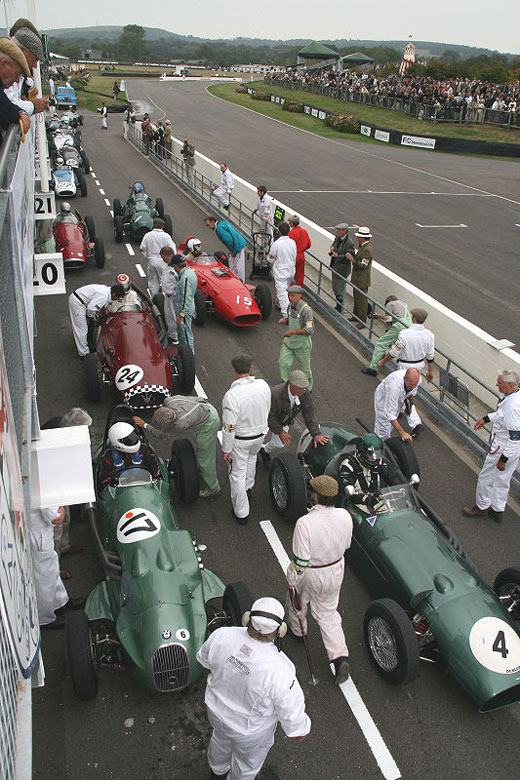
What makes Goodwood great. The cars, the pits, the clothes, the drivers, the backdrop, are all presented with relentless historical accuracy. Then they go out and race like hell.
Color Photos and captions by Hugues Vanhoolandt
Text by Pete Vack
Goodwood’s history has a very Italianate connection. The 9th Duke of Richmond better known as “Freddie” March, was an engineer and engaged in coach building in a business arrangement with Kevill-Davies.
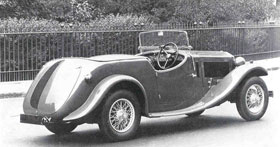
Lancia Augusta March.
Their favorite subjects were Lancias, and the firm produced a number of sporting Lancia Augustas and Aprilias in the 1930s. In 1936, a hill climb was held for a small group of Lancia owners on the grounds of the March’s estate in West Sussex. Freddie reportedly won, of course. The fun was short lived as war was just around the corner. The March’s backyard became an airfield during WWII, and being only 60 miles south of London, served as a base for the Battle of Britain.
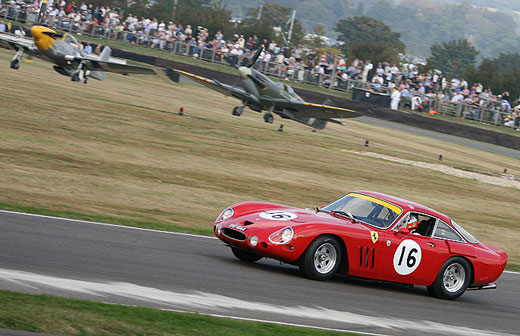
The 330 LM Ferrari s/n 4381 SA of Pirro/Verdon-Roe on his way to second place in the TT race as a Mustang and a Spitfire prepare to take off. Where else than at Goodwood can you see this?
The Spitfires seen on the grounds today are very much a part of the Goodwood Legend. (In addition to the racecourse, there is an airfield and flying club, and horse racing every week.) After the war, March used the perimeter road that bordered the airport as the site of a new motor racing circuit, and in 1948, Goodwood Motor Circuit opened its gates. For the next 18 years Goodwood hosted a series of events for just about everything on wheels, including motorcycles. The last meet was held in August of 1966. Thus the time frame for the vintage events is post war to the mid 1960s.
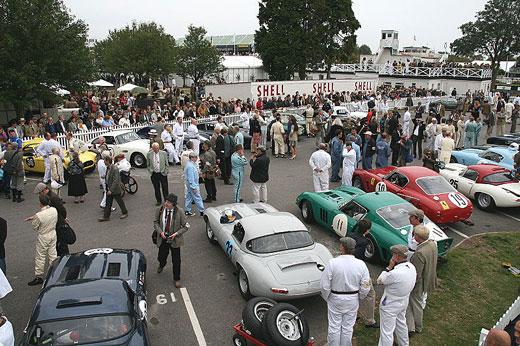
For many of us, this scene at the Goodwood paddock should look familiar. See below. The cover is from January 1965.
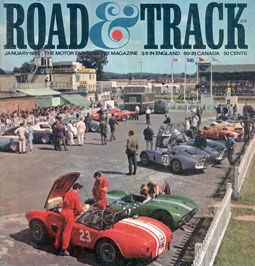
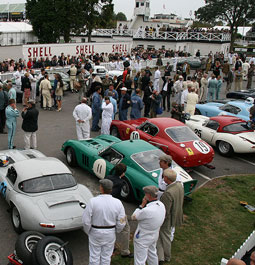
Obviously, Freddie’s grandson, who would become the Earl of March, was as smitten by our hobby as was his grandfather.
______________________________________________________
If you are enjoying this article, why not consider a donation to VeloceToday? Click here for details..it’s easy!
______________________________________________________
Fortunately, unlike Brooklands, the Goodwood facility was in use as a testing facility for many years, until on 18 September 1998, “..exactly 50 years after the first event in 1948, the Earl of March re-enacted the opening of the track meeting in the same Bristol 400 that his grandfather had used half a century before…” Surely, Goodwood seemed untouched by the modern world.
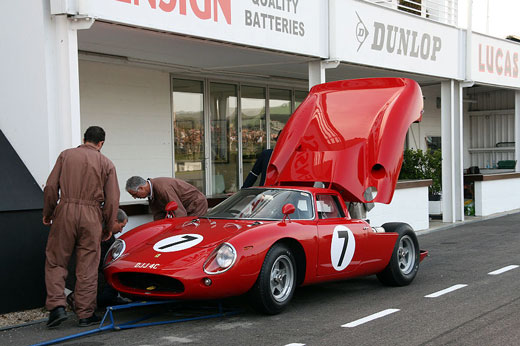
250 LM s/n 6051 of Irvine Laidlaw, one of three to race this year, in the Goodwood pits reproduced as it was in the 60s. The pits probably never looked so good at the time.
Eleven years on, the Revival hosts eighteen different “trophy cup” races, consisting of different classes and eligible years, from the St. Mary’s Trophy for sedans to the Barrie Sheene Memorial Trophy for motorcycles. Unlike Monterey, this is true racing, complete with major and minor incidents and very exciting. The drivers are simply stellar—if a decent driver is still vertical, you can bet he’s competed at the Revival, or wanted to very much. This year was a celebration of Sir Stirling Moss’s 80th birthday, and out came 80 cars that were associated with his career.
Somewhat confusing is Goodwood’s Festival of Speed. This separate event is staged every summer in the grounds of Goodwood Park, the Festival attracts many of the current Formula 1 teams, rally cars, racing motorcycles, supercars, dragsters, you name it. One at a time demonstration runs use the roads of the estate, not the Goodwood track itself.
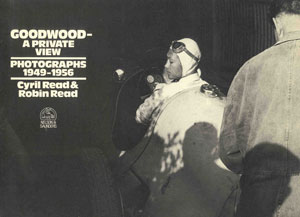
But that is now, this is Disneyland. What was Goodwood really like in the early 1950s? From 1949 to 1956, Cyril Read took his Baby Ikonta cameras and his son Robin to Goodwood’s various events. Lack of a proper camera made Read concentrate his efforts in the paddock. In 1986 Robin gathered them up for a book entitled “Goodwood-A Private View”. The world captured was the real Goodwood, and the paddock images reflect all the unusual and wonderful cars and people that was post war racing in the U.K., beginning with the cover photo of an apprehensive Prince Bira in the 4.5 liter OSCA Maserati.
But alas, roll the images of today. Hugues, get on with it.
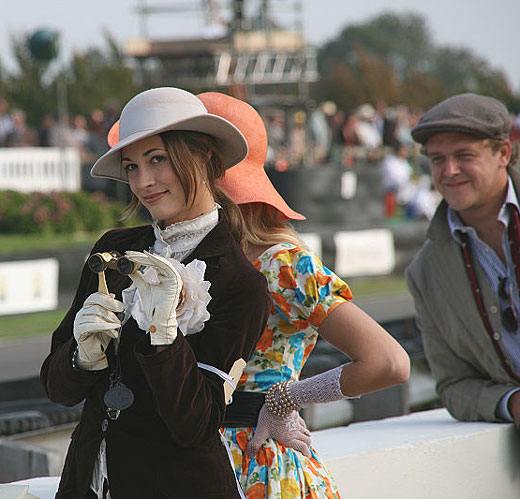
A Camelot land where the girls never get older–
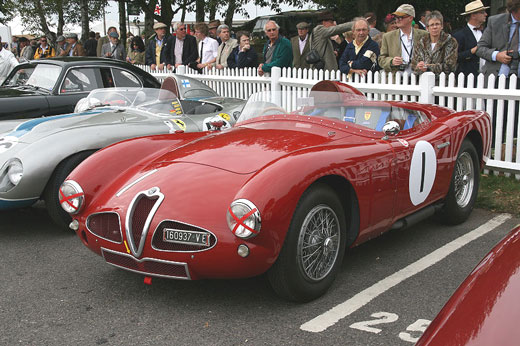
Here’s one for our astute readers. A Disco Volante? If so which one? Or a replicar? Sorry, no chassis number available.
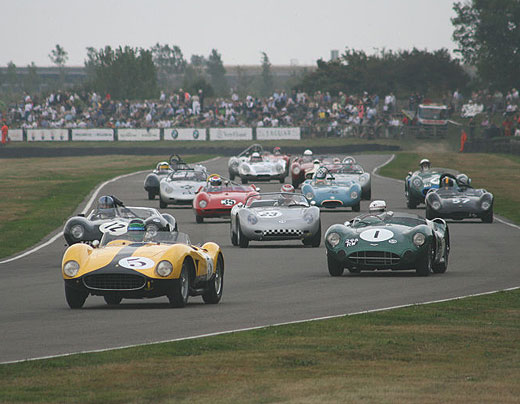
The Ferrari 500 TRC s/n 0682 MDTR of the Cottingham family leads the Aston driven by Brian Redman as well as Jaguar, Porsche, Lotus in the Lavant Cup.
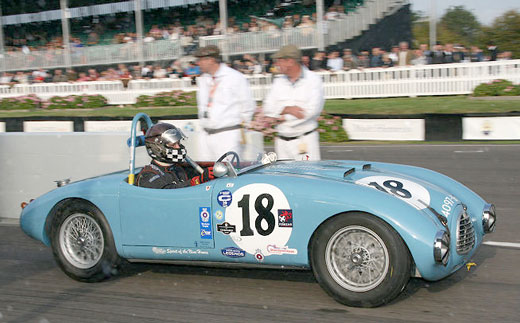
Eddie McGuire and his 1949 Gordini Type 23S is a faithful entrant at Goodwood. Despite its modest engine, he finished in the middle of the field ahead of bigger Jag C-Types and Aston Martins.
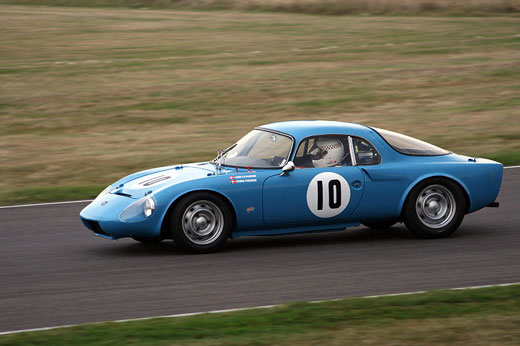
This 1964 Matra Djet, entered in the Fordwater Trophy for 1960-1966 production based sports and GT cars, had some difficulties following the rhythm of the Healeys, TVRs and Lotus Elite with his tiny 1108 cc engine.
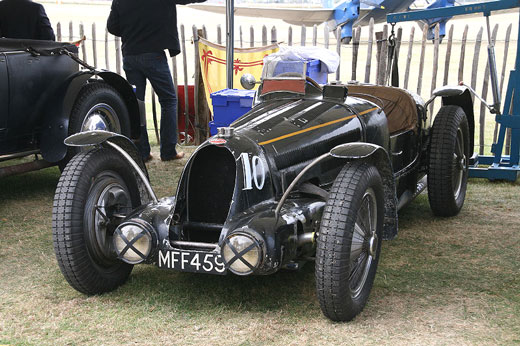
Bugatti Type 59 s/n 57248 is a piece of history in itself. This former Grand Prix car, later modified for the Sport category, was then sold by Bugatti to King Leopold of Belgium who painted black with a yellow strip with a modified front end. Still racing today, it finished 4th in the Brooklands Trophy with Belgian Hubert Fabri at the wheel.
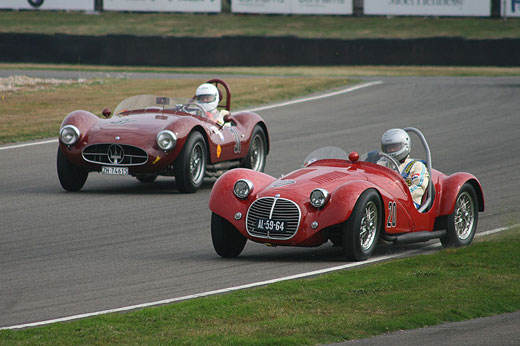
Madgwick Cup for sports-racing cars under 2-litres (1948-1955) saw a fierce battle between Maseratis A6GCS, sometimes to the limit. The Maserati on the right was onced owned by Karl Ludvigsen.
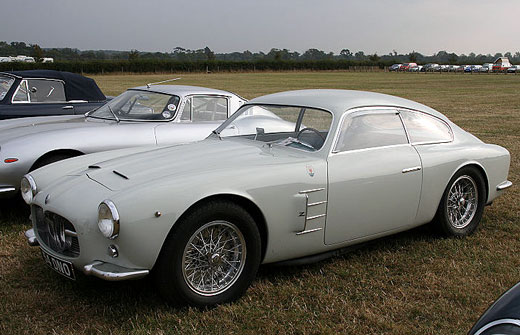
There is also a revival car park for pre-66 cars where one can find some rarities like this Maserati A6G2000 Zagato.
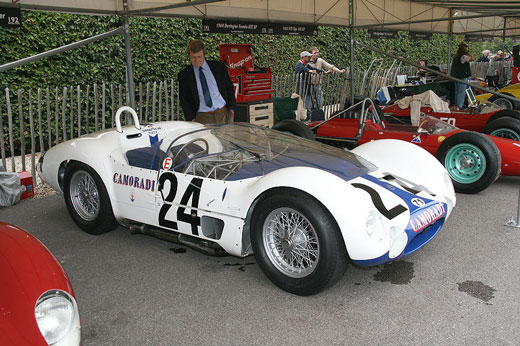
Maserati Tipo 61 “Birdcage” s/n 2451 was part of the Sir Stirling Moss celebration. Moss drove this car in Tipo 60 guise to a victory at Rouen in 1959. It was later converted to a Tipo 61.
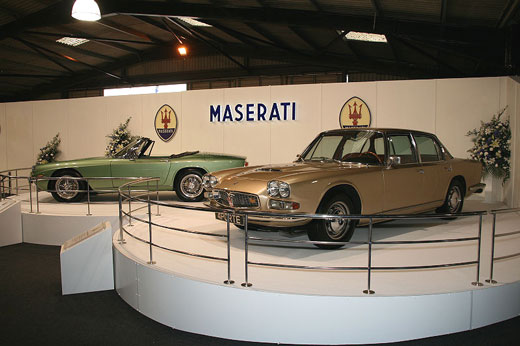
Earls Court Motor Show was held in West London in the 50s and 60s. An evocation of that show was held at Goodwood and some manufacturers like Maserati played the game with stands evoking the look and the feel of this golden age.
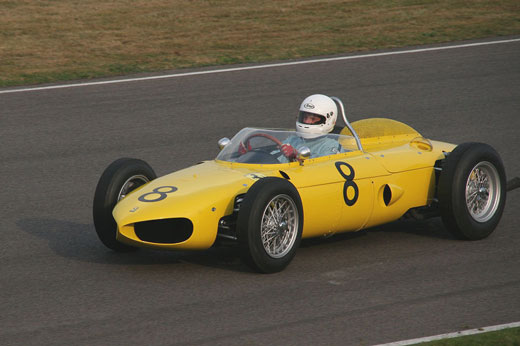
A recreation of the Ferrari 156 F1, also called the “sharknose”, as it appeared at the 1961 Belgian GP driven by Olivier Gendebien, who finished 4th. Yellow was the colour of the Belgian entered cars as the colour of the famous Ecurie Francorchamps. Although last in the Glover Trophy, finishing the race was like a relief for the team after six years of work to build this car.
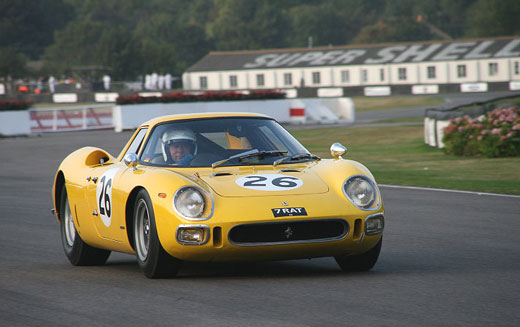
The second of three 250 LMs at Goodwood, s/n 6313 of Carlos Monteverde.
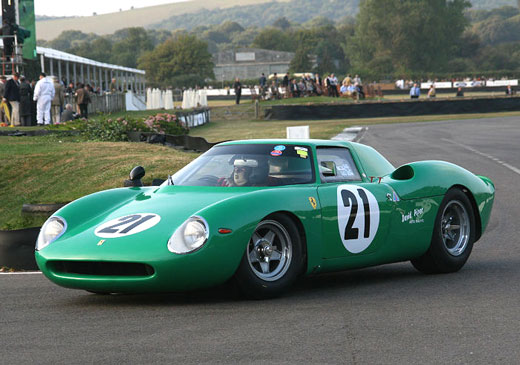
And the third one being s/n 8165, driven by David Piper himself.
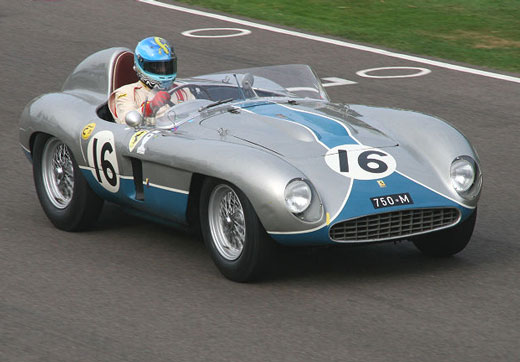
Brazilian Carlos Monteverde finished 4th in the Freddie March Memorial Trophy reserved for cars which took part to the Goodwood Nine-Hour races between 1952 and 1955.
He is seen here in his Ferrari 750 Monza s/n 0568 M.
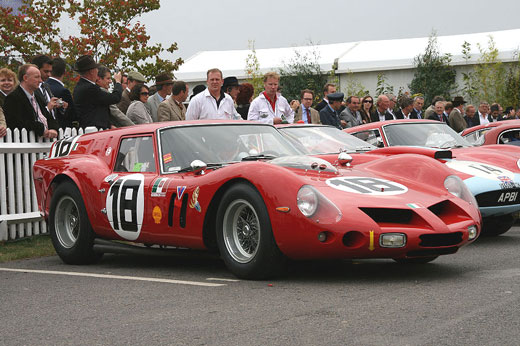
The only non-British cars in the TT are the Ferraris but they are out in force. Among them, this 250 GT SWB s/n 2819 GT bodied by Drogo and called the “Breadvan”.
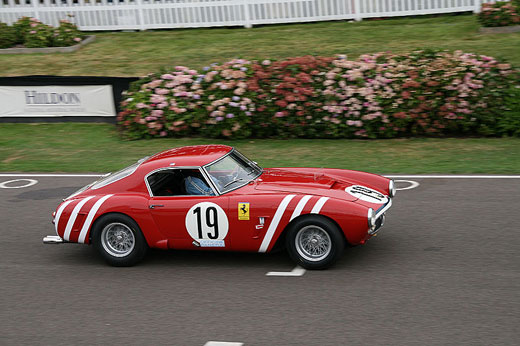
Indy 500 winner Danny Sullivan drove this 250 GT SWB s/n 1759 GT with owner John Kotts.
Pete:
The Alfa Romeo shown in the collecting area, #1, was not a replica. It is the 3000PR of Chris Mann which has been restored over 20 years. This was the 1954 version of the 6c 3000CM….known as the 1953 Disco Volante though in all accuracy, that is a misnomer, and only the original 1952 cars were Disco Volantes. The name just stuck. The 3000PR was crashed by Consalvo Sanesi in early 1954 at Monza, but the more or less scrapped car was saved, and found its way to the UK with many other Alfas. Sanesi told me it had been destroyed..”throwed at the garbage” he said, but later it was confirmed that the remains had been saved.
Ed McDonough
Wonderful.
Please stop! All these Goodwood photos are bringing me to tears. I was at the Goodwood TT in 1962 when Innes Ireland won in the UDT Laystall 250 GTO.
Oh! and by the way, the Breadvan was not built by Drogo. A soon to be forthcoming book explains all… Look for it!